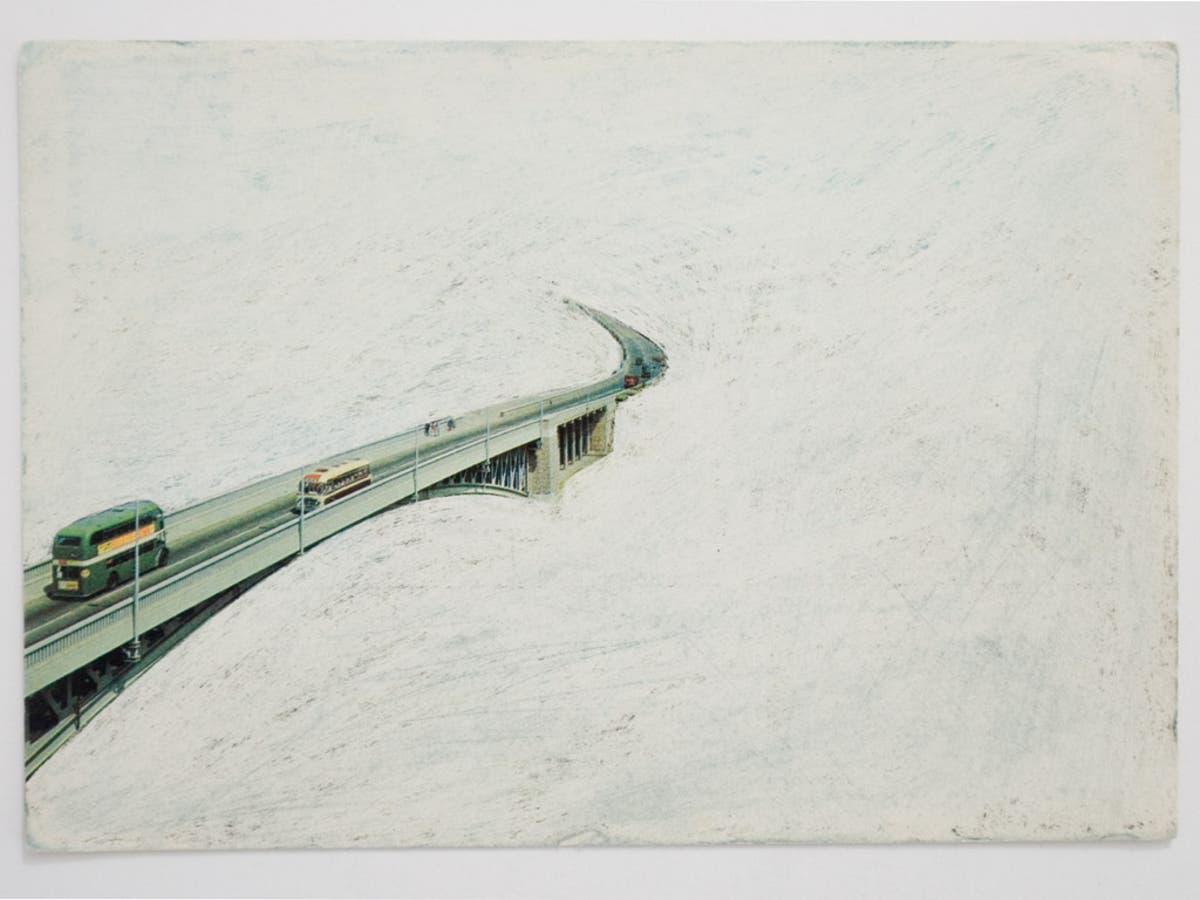Utarand IV
2022 - Sculpture (Sculpture)
129.54 x 55.88 cm
Prabhakar Kamble
To produce the series of sculptures collectively titled Utarand , Prabhakar Kamble relocated his studio to Kolhapur, Maharashtra, near the village where he was born into a family of daily wage earners. Kamble cast the feet of agricultural workers in metal to prop up the eponymous terracotta pots traditionally used to store food and grains in every home. A commentary on the caste system’s four-tiered hierarchy, the pots become smaller as they go up the stand, mimicking the structure of society where most of the population is comprised of impoverished communities, which form the base of the caste system while a small minority makes up the wealthy upper castes. The pots also resemble the terracotta urns that traditionally contain ashes, illustrating the violence of caste conflict lynchings. Atop each structure is a symbol of dehumanization; Utarand IV features a miniature cow (whose life is considered more worthy than a human’s in many Indian religions) painted in indigo, the color that the Ambedkarite community associates with emancipation and abolishment of castes.
Prabhakar Kamble is an artist, curator, and cultural activist. His work addresses social justice, the annihilation of caste, and the denial of these issues by institutions due to selective humanism and ruling class aesthetics negating subaltern expression. His practice is informed by Ambedkarite principles that privilege equality over caste identity. He is known for his politically-engaged performances, which are often complex commentaries on society, marked by a symbolic use of material, either found or made and at times heightened by the representation of a color.
Colors:
Related works sharing similar palette

© » THE INDEPENDENT
Artists' Postcards: A Compendium, By Jeremy Cooper | The Independent | The Independent Of interest to students of art and deltiologists (collectors of postcards) alike, Jeremy Cooper's extensively illustrated book provides the first critical study of the place of the humble postcard in the history of art...

© » KADIST
Gabriel Kuri
2010Gabriel Kuri has created a series of works in which he juxtaposes perennial and ephemeral materials...

© » MODERN MET PHOTOGRAPHY
People in the UK Can Be Prescribed Photography to Treat Mental Health Home / Science / Health People Can Be Prescribed “Photography” as a Mental Health Treatment in the UK By Margherita Cole on December 6, 2023 Photo: olhovyi_photographer/ Depositphotos Creative outlets like drawing and painting are great ways of exploring your emotions and relieving stress...

© » KADIST
Bahar Noorizadeh
2022The Red City of the Planet of Capitalism is part of a three project lineage, following Bahar Noorizadeh’s research on the architecture of the Soviet Union...

© » THEARTNEWSPER
Phillips's selling show of contemporary Indigenous art reflects surge in curatorial interest Art market Museums & heritage Exhibitions Books Podcasts Columns Technology Adventures with Van Gogh Search Search Art market news Phillips's selling show of contemporary Indigenous art reflects surge in curatorial interest Collectors’ enthusiastic response to 'New Terrains' exhibition is latest signal that the market is finally catching up Carlie Porterfield 9 February 2024 Share Death of Adonis (2009) was one of two paintings by Cree artist Kent Monkman in the Phillips show © Kent Monkman Just after ringing in the New Year, Phillips opened the doors of its Park Avenue headquarters for New Terrains , a selling exhibition of work by around 65 contemporary Indigenous artists from the US and Canada across seven decades...

© » KADIST
Martha Araújo
1982In Habito/Habitante , the suspended material renders the wall a prison and the participant a prisoner...

© » KADIST
Yang Xinguang
2009Although seemingly unadorned at first glance, Yang Xinguang’s sculptural work Phenomena (2009) employs minimalist aesthetics as a means of gesturing towards the various commonalities and conflicts between civilization and the natural world...

© » KADIST
Natan Lawson
Untitled (Bubbles) by Natan Lawson is produced by a marker with a ball-bearing tip, which is drained and refilled with a new color of acrylic paint for each layer...

© » KADIST
Jiri Kovanda
1992Untitled (1992) responds to the same principles of an economy of means as the artist’s actions and installations: three empty cardboard boxes which have contained photographic film are piled one on top of the other...

© » ARTS EQUATOR
Weekly Picks: Indonesia (3 - 9 September 2018) | ArtsEquator Thinking and Talking about Arts and Culture in Southeast Asia Weekly To Do September 3, 2018 Top Picks of Indonesia art events in Jakarta, Bandung, and Yogyakarta from 3-9 September 2018 The Warna Warna Exhibition is a collaboration between the singer Andien and the Art Therapy Center Widyatama that is exhibited this week at Dia...

© » KADIST
Tacita Dean
2001The photographic quality of the film Baobab is not only the result of a highly sophisticated use of black and white and light, but also of the way in which each tree is characterized as an individual, creating in the end a series of portraits...

© » HYPERALLERGIC
Sleeping Polar Bear Snuggling on Iceberg Wins Photo Award Skip to content "Ice Bed" (2023), digital photo (© Nima Sarikhani, Wildlife Photographer of the Year; all images courtesy the artist and Natural History Museum, London) In an era of immeasurable chaos caused by unsustainable human activity across the planet, it’s crucial to look within the natural world for order, hope, and to feel grounded as things spiral around us...

© » ARTS EQUATOR
Weekly Picks: Indonesia (11-17 February 2019) | ArtsEquator Thinking and Talking about Arts and Culture in Southeast Asia Weekly To Do February 11, 2019 Top Picks of Indonesia art events in Jakarta, Bandung, and Bali from 11-17 February 2019 We start this week’s pick in the capital city of Jakarta...







